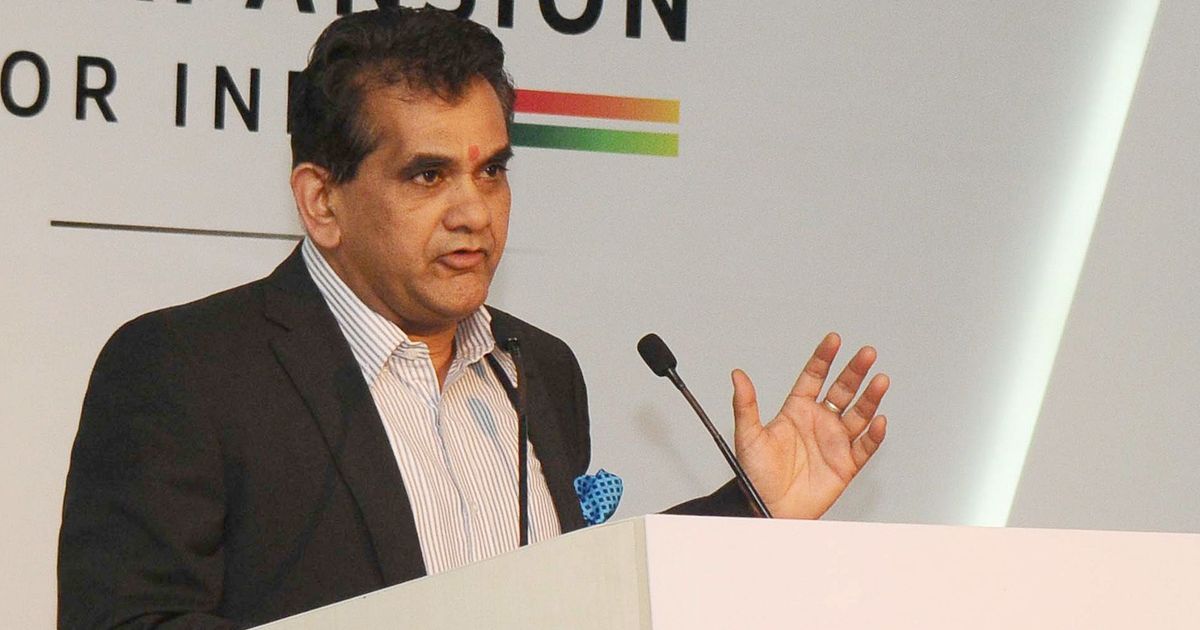Amitabh Kant, India’s G20 Sherpa and former CEO of NITI Aayog, has presented an ambitious vision for India’s economic future. He predicts that India could contribute as much as 30% to the global GDP between 2035 and 2040 and surpass Germany and Japan by 2027. This optimistic forecast is based on significant structural reforms, robust economic growth, and the proactive global expansion of Indian companies. This article explores the basis of Kant’s predictions, the structural reforms driving India’s growth, and the strategies needed for Indian businesses to achieve global prominence.
Structural Reforms: The Backbone of Economic Growth
India’s recent economic performance and future potential are deeply rooted in a series of structural reforms that have created a more dynamic and resilient economy. Here are some key reforms that have been instrumental:
Goods and Services Tax (GST): The implementation of GST has revolutionized India’s indirect tax system by creating a single unified market. It has reduced tax barriers, streamlined compliance, and enhanced revenue collection, making it easier for businesses to operate across state lines.
Insolvency and Bankruptcy Code (IBC): The IBC has transformed the resolution process for distressed assets, improving the ease of doing business and ensuring more efficient allocation of resources.
Make in India: This initiative has encouraged both domestic and international companies to set up manufacturing units in India, boosting industrial growth and creating jobs.
Digital India: Aimed at transforming India into a digitally empowered society, this initiative has expanded internet connectivity, enhanced digital literacy, and integrated technology into various aspects of governance and daily life.
Labor Law Reforms: The consolidation and simplification of labor laws into four codes have aimed to make labor markets more flexible and transparent, promoting industrial growth and worker welfare.
Economic Performance and Projections
India’s economy has shown remarkable resilience and growth, with an 8.4% increase in GDP over the last three quarters, as highlighted by Amitabh Kant. This robust growth is a testament to the effectiveness of the structural reforms and the underlying strength of the Indian economy. Key sectors contributing to this growth include information technology, pharmaceuticals, manufacturing, and services.
The prediction that India could surpass Germany and Japan by 2027 is based on the country’s large and growing consumer market, increasing foreign direct investment, and improvements in infrastructure and business environment. If current trends continue, India is well on its way to becoming the third-largest economy in the world, trailing only the United States and China.
Global Expansion of Indian Companies
For India to achieve its ambitious economic targets, Indian companies must expand their global footprint. Kant’s call to action for Indian businesses involves several strategic imperatives:
Innovation and R&D: Indian companies need to invest in research and development to innovate and compete on the global stage. Leveraging technology and developing cutting-edge products and services can help Indian firms capture international markets.
Market Diversification: Expanding into new markets beyond traditional regions like the US and Europe is crucial. African, Latin American, and Southeast Asian markets offer significant growth opportunities for Indian businesses.
Strategic Partnerships and Acquisitions: Forming alliances with global companies and acquiring foreign firms can provide Indian businesses with access to new technologies, markets, and distribution networks.
Brand Building: Establishing strong global brands is essential for Indian companies to compete effectively. This involves consistent quality, robust marketing strategies, and maintaining a strong presence in international markets.
Sustainable Practices: Emphasizing sustainability and corporate social responsibility can enhance the global reputation of Indian firms and align them with global trends towards environmentally friendly and socially responsible business practices.
Challenges and Mitigation Strategies
While the outlook is promising, India faces several challenges on its path to achieving these ambitious targets:
Infrastructure Bottlenecks: Continued investment in infrastructure is needed to support economic growth. Addressing issues related to transportation, energy, and urban development is crucial.
Skilling the Workforce: Enhancing the skills of the workforce to meet the demands of a rapidly changing economy is essential. Vocational training and education reforms can help bridge the skill gap.
Regulatory Environment: Simplifying the regulatory framework further and reducing bureaucratic red tape can make it easier for businesses to operate and thrive.
Income Inequality: Ensuring that economic growth translates into improved living standards for all sections of society is important for social stability and sustainable development.
Environmental Sustainability: Balancing economic growth with environmental sustainability is critical. India needs to adopt green technologies and sustainable practices to ensure long-term viability.
Conclusion
Amitabh Kant’s vision for India’s economic future is bold and transformative. By building on the foundation of structural reforms, fostering innovation, and encouraging global expansion of Indian companies, India is poised to play a significant role in the global economy. Achieving the target of contributing 30% to global GDP and surpassing major economies like Germany and Japan requires sustained efforts, strategic planning, and effective implementation of policies. If India successfully navigates the challenges and leverages its strengths, it can emerge as a leading global economic powerhouse in the coming decades.




